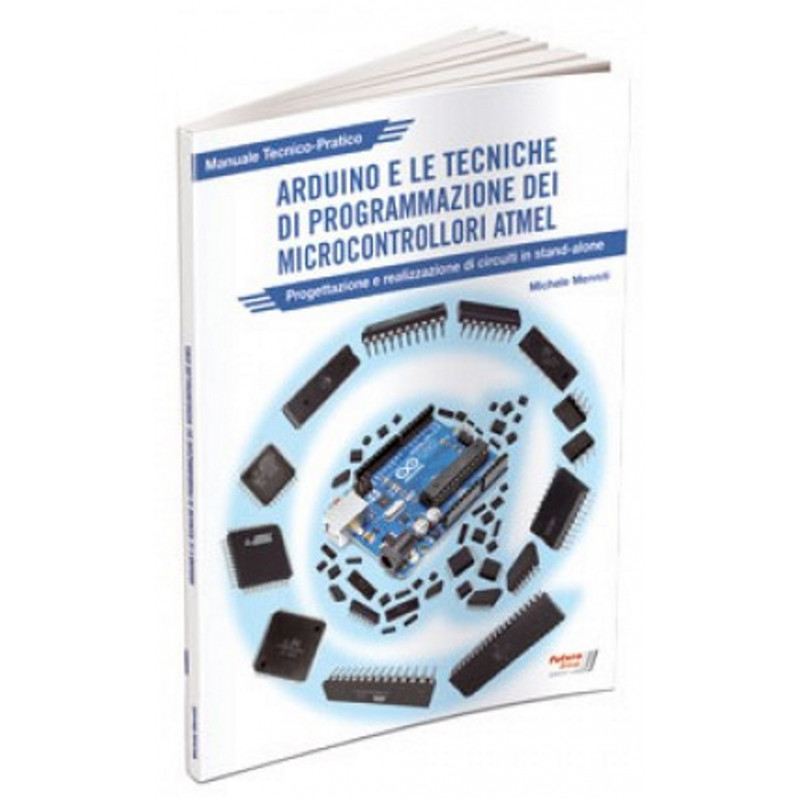



Have you already learned to program with Arduino ? Go further and dedicate yourself to programming ATMEL micro using the same Arduino .
 Secure Payments
Secure Payments
Pay safely with Credit Card, PayPal, Amazon Pay or Bank Transfer
 Fast Shipping
Fast Shipping
We ship across Europe and worldwide with UPS, DHL and DPD
 30-Day Easy Return
30-Day Easy Return
You have 30 days from delivery to return the product if you're not satisfied
|
Have you already learned to program with Arduino ? Go further and dedicate yourself to programming ATMEL micro using the same Arduino . This Manual is a valuable tool for those who want to design and build stand-alone circuits using the micro of the ATMEL ATmega and ATtiny families using an Arduino board or a USB-Serial converter with BitBang signals. To facilitate the tests and programming of the approximately 50 models covered (between PDIP and SMD packages), the Author has designed the very convenient "ISP & Serial Programmer" card, presented in a specific chapter of the Manual, and three "Adapter" cards, which allow the very simple housing of microcontrollers for all types of programming provided. The " Arduino and ATMEL microcontroller programming techniques" manual cannot be missing on the laboratory table of anyone who wants to design circuits based on ATMEL microcontrollers, also in function of the fact that it has been embellished with an entire chapter dedicated to "Design and implementation of circuits in stand-alone ", which will allow the reader to transfer to circuits created expressly what he has experimented with the exceptional Arduino boards. |
|
Click here to read the introduction and summary. |
|
Structure of the book ARDUINO and the programming techniques of ATMEL microcontrollers |
|
|
Additional information |
|